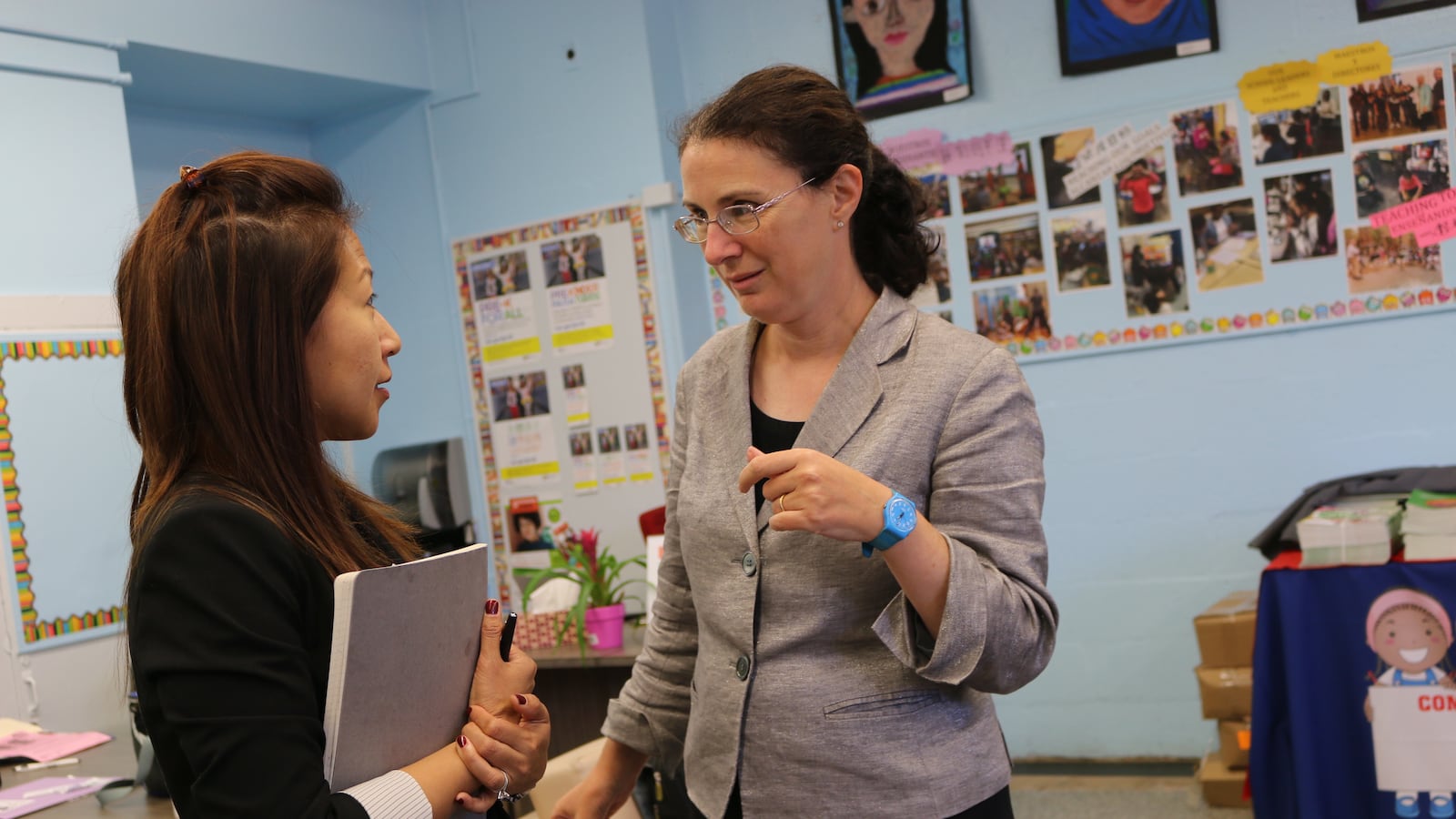New York State education officials on Tuesday announced they will launch the second round of a grant program that attempts to improve struggling schools by integrating them.
Called the Socioeconomic Integration Pilot Program, or SIPP, the initiative was eventually replicated at the federal level before being axed by President Trump’s education department. In New York City, the program helped spur a district-wide integration plan on the Lower East Side.
The state will award up to 30 districts with the new grants, whose purpose has expanded beyond just economic integration. At a Board of Regents meeting Tuesday, Assistant Commissioner Ira Schwartz said the state also wants to achieve a more even racial and ethnic balance in schools, in addition to a better mix of students who have disabilities or are learning English.
Richard Kahlenberg, who reviewed applications for the first round of grants in 2015, applauded the program’s expansion.
“Socioeconomic integration is a powerful lever for improving academic achievement, and racial and ethnic integration is an important way to strengthen our democracy,” said Kahlenberg, a senior research fellow at The Century Foundation, a progressive think tank. “So I think both goals are important and should be pursued.”
Extending the grant program is just the latest indication that state officials are serious about fostering diversity in New York, which has been described as having the most segregated education system in the country, according to a widely-cited 2014 report by researchers at the University of California, Los Angeles. The state’s many school districts span wealthy suburbs, poor rust-belt neighborhoods and New York City — with students largely separated by race and class in their schools and classrooms.
State officials are also working on a policy statement affirming their commitment to integration and plan on creating a commission of policymakers, researchers and educators who will help develop integration recommendations. And in its plan for improving low-performing schools that each state was required to submit under the new federal education law, New York listed integration as one of its interventions.
Mike Hilton, who reviewed grant applications for the initial pilot, said the moves make New York State unique.
“New York State is special in that there is no court order saying that the state has to pay attention to diversity or pursue these kinds of remedies,” said Hilton, who works on education policy for the Poverty & Race Research Action Council, and the National Coalition on School Diversity. “This is New York State leading the way.”
The state has not said how much it will spend on what officials informally called “SIPP 2.0,” which is funded through federal school-improvement money. Applications will open within the next month.
Initially, the funding will be used to provide district leaders a crash-course in integration research, policy and best practices. Each will receive between $30,000 and $50,000 and spend six months training and sharing ideas in what the state calls a “professional learning community.”
The community was created in response to feedback from districts in the pilot program, said Angélica Infante-Green, a deputy commissioner with the state education department.
“We heard back from the participants that they would have liked a little more support,” she said. “So we built that in so that they can create a community, learn from each other and learn from experts.”
District leaders can then apply for additional funding to turn their ideas into full-fledged integration plans, and a final round of grants would go towards carrying out those plans.
In the first pilot program, 25 schools across New York participated, using the grants for initiatives like creating magnet programs or conducting outreach to families.
In New York City, the grant served as the foundation for what became a district-wide integration plan in District 1, which includes the Lower East Side and East Village. Starting next school year, every elementary school will give preference to students who meet certain indicators of poverty or wealth, in an attempt to enroll a similar percentage of needy students across the entire district.
Putting the grant-funded integration plans into action has not always gone smoothly.
In District 1, planning fell far behind schedule and parents often clashed with city officials over how to carry out a new enrollment system. In Rochester, the grant was used to devise an interdistrict plan to attract families from the suburbs to schools in the city, but paying for transportation costs has been a major barrier.
In one of his last acts as state education commissioner, John B. King launched New York’s grant program. Experts said it was the first known state program of its kind.
King went on to become secretary of the U.S. Education Department, where he implemented a similar model. But in March, the department announced an end to the $12 million program — called Opening Doors, Expanding Opportunities. Federal officials told the Washington Post that it was a poor use of tax money since the funds were used for planning and not implementation.
“The federal climate and the lack of federal leadership on key education issues reinforces the importance of New York leading on issues like this,” said Ian Rosenblum, executive director of The Education Trust – New York. “There’s a lot that New York can and should be doing.”

